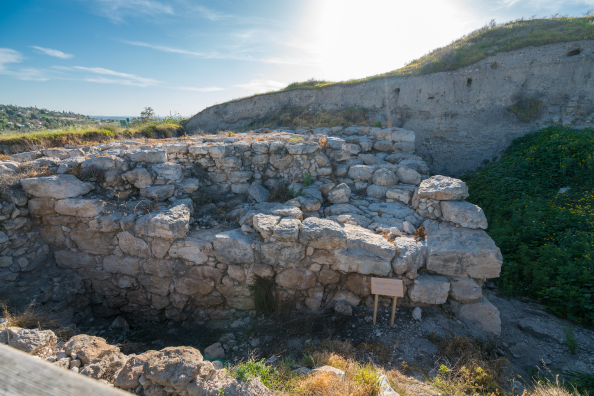“Pharaoh, King of Egypt, had come up and conquered Gezer and burnt it in fire, and killed the Canaanite who lived in the city. He gave it as a wedding present to his daughter, Solomon’s wife, and Solomon then build up Gezer” (1 King 9:16)
By Nosson Shulman
Today we visit Tel Gezer, an exciting biblical site that tourists seldom visit. From afar it seems to be a non-descriptive desolate hill, but those who choose to enter this historic wonder are immediately treated to an abundance of stunning Biblical archaeology!
In Canaanite times, Gezer was a major city-state with its own King.
Gezer’s importance was largely due to its location on an important trade route junction.
The city’s infrastructure was quite advanced for its day, including a sophisticated water system.
When the Children of Israel entered into the Holy Land after 40 years in the desert, they waged war with the 31 Canaanite city-states. The King of Gezer and his army fell in battle against Joshua, though they failed to capture the city (Joshua 10:33), which was designated a Levite city (Joshua 21:21). The city remained in Canaanite hands until the times of King Solomon.
Many generations later, Pharoah (not the same one from Exodus) conquered Gezer and destroyed the city by fire. When his daughter married King Solomon, Pharoah gave Gezer to his new son in law as a wedding gift . Solomon rebuilt and fortified Gezer (and many other cities) making it a regional capital.
Several hundred years later during the Assyrian invasion of Tiglath-Pileser , Gezer was captured and destroyed.
During the Hellenistic wars against the Jewish Maccabees (of Chanukah fame circa 167-142 BCE) Gezer was rebuilt as a fortress and utilized by the Hellenists as one of their main military headquarters. This was until the Maccabees captured Gezer and ultimately won the 25 year war, declaring Jewish independence in Israel once again (which lasted until the Romans seized the country in 63 BCE). During this time Gezer became a small, insignificant farming town and eventually abandoned.
Since the early 1900s, several major archaeological excavations took place, which yielded important finds including the “Gezer Calendar”, the oldest (according to some historians) Hebrew inscriptions ever found anywhere!
Although few visit this site, the tourists I have brought here very much enjoyed seeing it! I highly recommend including it on your itinerary for your next visit!
Nosson Shulman is a licensed tour guide and trip organizer in Israel who specializes in History, Tanach (Bible) and Adventure Tours. For more itineraries click here. Check out our new Virtual tours including free sneak preview videos.
